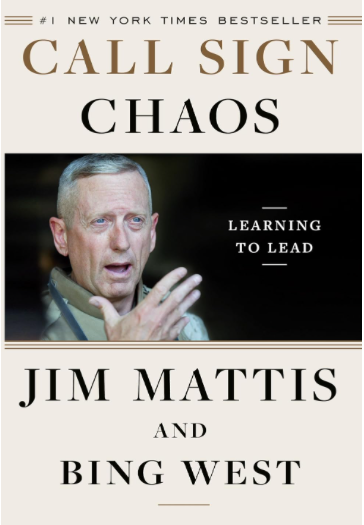
YLD BOOK REVIEW – Call Sign Chaos by Jim Mattis and Bing West (2021)
Call Sign Chaos by Jim Mattis and Bing West (2021)
Book Review by: Joseph Leonard, CMDR, U.S. Coast Guard (Ret)
Learning to Lead is more than a memoir—it is a masterclass in leadership, personal growth, and the relentless pursuit of excellence. This book offers profound insights into the art of leadership through a blend of gripping battlefield narratives, hard-earned lessons, and timeless wisdom. As a former VMI Cadet, US Army Lieutenant, or Lieutenant in a Volunteer Fire Department, I wish Call Sign Chaos had been available during my formative years. The book is a treasure trove for anyone striving to lead effectively, particularly in complex and high-pressure environments. General Mattis takes readers through three stages of his storied career: direct leadership as a young Marine officer, executive leadership as a battalion and division commander, and strategic leadership at the highest levels of military and government. Each phase is packed with lessons on how to lead, learn, and adapt in the face of uncertainty and adversity.
What makes Call Sign Chaos truly stand out is its focus on leadership development. General Mattis emphasizes the importance of understanding human nature, building trust, and fostering unity of purpose. He doesn’t shy away from recounting mistakes he made or challenges he faced, making it clear that great leaders are not born but forged through training, experience and reflection. These candid reflections remind us that leadership is a journey of continuous improvement, requiring humility, self-awareness, and the courage to learn from failures. Central to Mattis’s philosophy is the critical value of reading as a tool for intellectual growth and decision-making. Known for his extensive library and lifelong commitment to learning, Mattis famously declared, “If you haven’t read hundreds of books, you are functionally illiterate, and you will be incompetent, because your personal experiences alone aren’t broad enough to sustain you.” This book embodies that ethos, as it draws on a wealth of historical and philosophical knowledge to contextualize modern challenges. For Mattis, reading is not just a pastime—it is a professional responsibility for leaders who seek to broaden their horizons and make informed decisions.
The book also explores broader themes, such as the importance of understanding cultural contexts, maintaining ethical integrity, and navigating the complexities of international relations. Whether describing the intense combat in Fallujah or his strategic dealings with global leaders, Mattis consistently highlights the necessity of preparation, adaptability, and the ability to inspire those you lead. In a time when leadership is often reduced to soundbites and shortcuts, Call Sign Chaos stands as a powerful reminder that true leadership demands discipline, intellectual rigor, and a genuine commitment to those you serve. For aspiring leaders, military professionals, or anyone passionate about personal growth, this book is an indispensable guide.
YLD Key Leadership Takeaway: Call Sign Chaos is an invitation to think deeply about what it means to lead with purpose, integrity, and vision. This book will inspire you to further develop yourself as a leader.
ISBN: 9780812996838
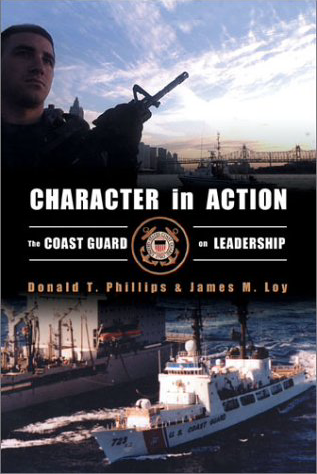
YLD Book Review – CHARACTER IN ACTION: THE US COAST GUARD ON LEADERSHIP (2003)
CHARACTER IN ACTION: THE US COAST GUARD ON LEADERSHIP (2003)
by Donald T. Phillips with ADM James M. Loy, USCG (ret.)
Reviewed by CDR Joseph J. Leonard, Jr., CDR, USCG (ret.)
Character in Action: The U.S. Coast Guard on Leadership is a powerful exploration of the leadership principles that drive one of the nation’s most dynamic and versatile military services. Co-authored by Donald T. Phillips and Admiral James M. Loy, USCG (Ret.), this book provides an insightful look into how the Coast Guard’s leadership and management practices are applied across diverse domains, ranging from the Maritime Transportation System to its 11 statutory mission areas, including search and rescue, environmental protection, and national defense.
What sets this book apart is its comprehensive approach to leadership, emphasizing its universal applicability across all levels of the Coast Guard—from enlisted personnel and commissioned officers to government civilians and the 25,000 members of the Coast Guard Auxiliary. By weaving together detailed case studies, comprehensive guidelines, and occasional anecdotes, the authors present leadership not as an abstract concept but as a tangible and teachable skill that can transform an organization from the ground up. The book underscores the adaptability and efficiency of Coast Guard leadership, that enables the service to respond to a staggering variety of challenges, from hurricane rescues to counter-narcotics operations and port security. Stories of heroism and innovation abound, providing concrete examples of leadership in action. For instance, tales of Coast Guard crews improvising solutions during life-threatening emergencies showcase the service’s ability to combine resourcefulness with decisive bias for action. Similarly, the book highlights how strategic management at the policy level ensures that resources are effectively allocated to meet national priorities.
One of the book’s strengths lies in its ability to engage readers by illustrating how leadership is not confined to those with rank or authority. Instead, it is a shared responsibility across the organization. Whether through mentoring, fostering accountability, or promoting a culture of trust, the Coast Guard demonstrates that leadership is a collective effort that thrives when all members contribute their unique skills and perspectives. The authors also delve into the importance of character as the foundation of effective leadership. The Coast Guard’s core values—Honor, Respect, and Devotion to Duty—are not just words but guiding principles that shape the behavior and decisions of its members. These values are reinforced through continuous training, professional development, and a commitment to mission excellence. For leaders in any field, Character in Action serves as a beacon of practical wisdom. It emphasizes the importance of clear communication, ethical decision-making, and fostering a sense of ownership among team members. The book’s lessons are universally applicable, making it a valuable resource not just for those in maritime or military professions but for anyone seeking to inspire and lead others.
YLD Key Leadership Takeaway: Leadership is not just about making decisions—it’s about instilling a culture of character, accountability, and collaboration throughout an organization. As the Coast Guard demonstrates, when every individual is empowered to lead with integrity, the entire team achieves mission success with efficiency and excellence.
ISBN:9781591146728

A Higher Standard: Leadership Strategies from America’s First Female Four-Star General by General Ann Dunwoody (U.S. Army, Ret.) (2015)
A Higher Standard: Leadership Strategies from America’s First Female Four-Star General by General Ann Dunwoody (U.S. Army, Ret.) (2015)
Reviewed by Rick Edinger, Deputy Fire Chief (Ret.), Chesterfield County, Virginia
“A Higher Standard” by Ann Dunwoody is a powerful blend of memoir and leadership guidance, offering insights rooted in her experiences as the first female four-star general in U.S. military history. The book serves as a great resource for anyone aspiring to lead with integrity, accountability, and a strategic mindset. The writing is underscored by her tenure leading the U.S. Army Materiel Command, a complex organization responsible for global military logistics.
Dunwoody emphasizes the principle of “Do the Right Thing for the Right Reason,” which resonates as a core leadership value throughout the book. She demonstrates that ethical decision-making and a commitment to fairness not only build trust but also set the foundation for effective leadership.
She candidly reflects on how “The Higher the Rank, the More Political Your Decisions” become. As leaders ascend in their roles, the complexity of their choices grows, requiring them to navigate competing interests while maintaining a focus on long-term goals. Dunwoody’s ability to balance these pressures is both instructive and inspiring.
Recognizing and managing relationships is another key theme. She advises leaders to “Recognize Your Advocates and Detractors,” emphasizing the importance of understanding who supports or opposes your initiatives. This awareness allows leaders to leverage their advocates effectively while addressing concerns from detractors in a constructive manner.
Dunwoody’s philosophy on leadership focuses on setting the tone and building a strong organizational culture, by leading through example and shaping a positive, results-driven environment. Her mantra of “Set and Enforce High Standards” is backed by actionable strategies, such as rewarding good performance and correcting poor performance. These practices ensure accountability and foster a culture of excellence.
A particularly compelling aspect of the book is Dunwoody’s guidance on branding and vision. She encourages leaders to “Build a Recognizable Brand,” highlighting the value of authenticity and consistency in establishing a reputation that inspires confidence. Additionally, she underscores the necessity to “Develop Your Strategic Vision,” urging leaders to think beyond immediate challenges and prepare for the future.
Dunwoody also integrates personal principles like “Never Walk by a Mistake,” showing how small actions can uphold accountability and inspire trust. Her reflections on vulnerabilities, such as not trying to be invincible as a leader and knowing your personal “Kryptonite,” provide a refreshing perspective on self-awareness and authenticity in leadership. Finally, she warns against the perils of over-confidence, illustrating how unchecked arrogance can lead to destructive outcomes.
Overall, “A Higher Standard” is more than a book—it’s a roadmap for leadership excellence. Dunwoody’s lessons are practical and inspiring, offering readers tools to lead ethically, navigate complexity, and create a lasting impact in their organizations.
The military was years ahead of public safety in promoting women to leadership positions. Women serving or aspiring to serve in public safety leadership positions can benefit from reading about Gen. Dunwoody’s journey.
ISBN: 9780738217796
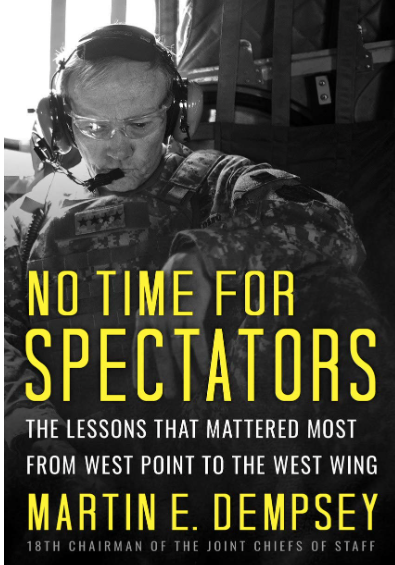
YLD Book Review – NO TIME FOR SPECTATORS (2020) by GEN Martin E. Dempsey
NO TIME FOR SPECTATORS by GEN Martin E. Dempsey
Reviewed by CDR Joseph J. Leonard, Jr., CDR, USCG (ret.)
General Martin Dempsey’s No Time for Spectators is a compelling exploration of leadership and followership, informed by more than four decades of military service, including his tenure as the 18th Chairman of the Joint Chiefs of Staff. Far from being a dry exposition of military strategy, the book offers a rich blend of personal anecdotes, profound insights, and practical wisdom applicable to leaders and followers across all walks of life. GEN Dempsey begins with a bold assertion: life is not a spectator sport. In an era defined by rapid information flow, high stakes, and intense scrutiny, he argues, the relationships between leaders and followers must transcend transactional interactions. Leaders are at their best when they understand the nuanced interplay between guiding and being guided. Through vivid accounts of his experiences, such as navigating the geopolitics of the Cold War along the East German border or making critical decisions in the Situation Room, GEN Dempsey examines the limits of loyalty, the importance of skepticism, and the surprising value of what he calls “responsible rebelliousness.”
One of the central themes of the book is the dynamic nature of leadership. GEN Dempsey contends that the best leaders are those who excel at following. This concept turns conventional wisdom on its head by emphasizing the humility required to listen, adapt, and learn from those being led. Leaders, GEN Dempsey suggests, must be attuned to the needs and perspectives of their teams, fostering a culture of trust and collaboration. He illustrates this through stories of soldiers and colleagues whose insights often shaped the outcomes of complex challenges. The book also delves into the expectations leaders and followers should have of one another. For leaders, GEN Dempsey emphasizes accountability, clarity, and the courage to make difficult decisions. Followers, in turn, must engage with sensible skepticism and a willingness to speak truth to power when necessary. This balance, he argues, is the foundation of any productive relationship, whether in the military, business, education, or politics. An especially resonant section of the book is GEN Dempsey’s discussion on “sweating the small stuff.” He challenges the conventional wisdom of overlooking minor details, arguing instead that attention to the small things often prevents larger problems. This principle is particularly vital in high-stakes environments, where minor oversights can have catastrophic consequences.
No Time for Spectators is more than a guidebook for leaders; it is a call to action for anyone striving to make a difference in today’s complex world. The book’s conversational tone, enriched with humor and candor, makes it an engaging read, while its lessons are profound and universally applicable.
YLD Key Leadership Takeaway: The best leaders are those who embrace the dual roles of leading and following, recognizing that mutual respect, trust, and the courage to challenge one another are the bedrock of effective relationships. Leadership, at its core, is not about authority but about shared responsibility for achieving meaningful outcomes.
ISBN: 9781939714213

YLD Leadership Book Review – “Highest Duty” (2009) by Chesley Sullenberger with Jeffrey Zaslow.
Highest Duty (2009)
My Search for What Really Matters, by Chesley Sullenberger with Jeffrey Zaslow.
Reviewed by Charles R. Thomas, United Airlines Captain (ret.)
Note: Captain Charles “Chuck” Thomas is a 10 year veteran of the Prince George’s
County (Maryland) Fire Department. He retired as an A320 Air Bus Captain in 2023 with
45 years flying experience, having logged 22,000 total flying hours in various aircraft.
Highest Duty reviews the life and experiences of Captain Chesley “Sully” Sullenberger
from his teenage years, through military flying and airline career, to safely landing USAir
Flight 1549 in the Hudson River on January 15, 2009. The emergency landing,
following failure of both engines due to bird strikes, has been referred to as the “Miracle
on the Hudson”. All 155 people on board survived.
This book is an interesting exploration into developing professionalism and leadership
skills as a lifelong journey, as opposed to just completing specific classes, or reading a
particular leadership publication. Sullenberger recognizes that many life experiences
were crucial in his development. As such, this book does not just focus on the Flight
1549 event but rather highlights many of the experiences and influences throughout his
life that prepared him to be successful when faced with the ultimate test of skill and
leadership. Interestingly, at various points, Highest Duty deviates into subjects such as
the life of an airline pilot, family dynamics, and planning for life after his flying career.
While not directly related to developing leadership skills, this helps the reader
understand and relate to Sullenberger. He is a regular, everyday guy, with typical
problems, but also someone who prepared himself through constant study, attention to
detail, and pursuit of the tenants of professionalism in his chosen field, in this case,
aviation.
Sullenberger explains how an airline captain, as the pilot-in-command and leader of the
crew, which includes other pilot(s) and the flight attendants, sets the tone for the
operation and influences many aspects of a typical flight. The image and confidence
you project as someone who is well-prepared, the things you say, and your actions to
guide and mentor others, are important traits he sought to develop and refine during his
career.
Throughout the book, Sullenberger refers to various aviation incidents that captured his
attention and influenced his own preparation. The lessons learned from tragedies and
the experiences of others were exceptionally valuable as he examined each incident,
how they were handled, and what decisions he might have made to resolve the
situation. He emphasizes that true leaders never stop seeking knowledge, to include
learning from others, even if they are from a different background or perhaps younger
than yourself. This book will encourage the reader to reflect upon their own journey and
perhaps consider different ways to challenge themselves to develop true
professionalism.
YLD Key Leadership Takeaway: Professionalism and leadership require a commitment
to constantly evaluate your own development in terms of personal experiences,
technical competence, and respectfully interacting with people you meet and those you
manage, command, or are responsible for.
ISBN: 9780061924682
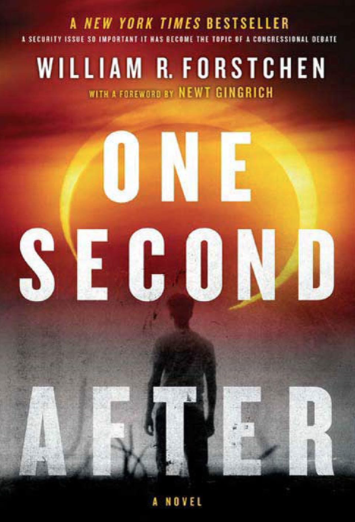
YLD Book Review – ONE SECOND AFTER (2011) by William R. Forstchen
ONE SECOND AFTER by William R. Forstchen
Reviewed by CDR Joseph J. Leonard, Jr., CDR, USCG (ret.)
William R. Forstchen’s One Second After is a gripping and thought-provoking post-
apocalyptic thriller that paints an extremely chilling portrait of life in the aftermath of a
catastrophic electromagnetic pulse (EMP) attack on the United States. The first book in
a compelling three-part series, it explores how society unravels in the blink of an
eye—literally one second—leaving Americans to grapple with a sudden and devastating
return to the Dark Ages.
Set in the town of Black Mountain, North Carolina, the story follows a retired Army
colonel and college professor as he struggles to protect his family and community from
the chaos that ensues after the EMP attack disables all modern technology. From the
collapse of critical infrastructure like power, communication, and transportation to the
scarcity of food and medical supplies, Forstchen vividly captures the cascading
consequences of a society wholly unprepared for such a calamity. The book is a
sobering examination of just how dependent we are on the fragile web of modern
conveniences—and how swiftly that web can be torn apart.
What sets One Second After apart from other dystopian novels is its grounding in
reality. Forstchen’s meticulous research lends credibility to the scenario, making it all the
more unsettling. The EMP weapon, capable of crippling a nation in an instant, is not a
fictional construct but a real threat, as acknowledged by military experts and even
Congress. The Wall Street Journal has warned of its devastating potential, and
Forstchen’s book has been cited as essential reading for understanding the magnitude
of the danger. The narrative is as much a study of human resilience as it is a cautionary
tale. Throughout the series, Forstchen explores themes of leadership, sacrifice, and the
moral dilemmas that arise when resources are scarce, and survival is at stake. The
main character’s military background equips him to take charge, but his humanity
shines through as he grapples with impossible decisions to protect his family while
fostering hope and unity in a community teetering on the brink of collapse.
In the tradition of On the Beach, Fail Safe, and Testament, One Second After is not just
entertainment; it’s a dire warning. Forstchen’s portrayal of societal breakdown is so
vivid and plausible that it compels readers to reflect on their own preparedness and the
fragility of the systems they rely on daily. The book urges us to take the EMP threat
seriously—not just as a theoretical possibility but as an imminent risk requiring national
and individual vigilance.
YLD Key Leadership Takeaway: In times of crisis, true leaders rise by fostering
resilience, making hard decisions with compassion, and inspiring those around them to
work together toward survival and recovery. Preparedness, adaptability, and a strong
sense of community are indispensable in facing the unthinkable.
ISBN: 13:9780765356864

YLD Book Review – RADICAL INCLUSION (2018) by GEN Martin E. Dempsey and Ori Brafman
RADICAL INCLUSION by GEN Martin E. Dempsey and Ori Brafman
Reviewed by CDR Joseph J. Leonard, Jr., CDR, USCG (ret.)
In Radical Inclusion: What the Post-9/11 World Should Have Taught Us About
Leadership, General Martin Dempsey and co-author Ori Brafman deliver a fresh,
thought-provoking perspective on leadership in the modern era. Rooted in lessons from
GEN Dempsey’s military career and Brafman’s expertise in organizational dynamics, the
book challenges traditional notions of control and power, offering instead a roadmap for
navigating the complexities of leadership in an increasingly interconnected and
scrutinized world. The central theme of the book is the idea of “Radical Inclusion,” which
advocates for an instinctual embrace of inclusivity. GEN Dempsey and Brafman argue
that the fear of losing control—common in today’s fast-paced, information-saturated
environment—often leads leaders toward exclusion. However, exclusion only breeds
mistrust, inefficiency, and missed opportunities. To succeed, leaders must actively
cultivate trust by including diverse perspectives and voices, even when doing so feels
counterintuitive or uncomfortable. The authors introduce the concept of the “Era of the
Digital Echo,” illustrating how the internet and social media amplify and distort
information. This phenomenon, they contend, makes facts vulnerable and undermines
the trust essential to effective leadership. Leaders must address this challenge by being
transparent, communicative, and empathetic, working to restore faith in their leadership
amid swirling doubts and misinformation.
Perhaps the most counterintuitive yet powerful idea presented is the notion of
“Relinquishing Control to Preserve Power.” GEN Dempsey and Brafman argue that the
traditional link between control and power is obsolete. In today’s hyperconnected
environment, leaders who hoard control risk alienating their teams and stifling
innovation. Instead, effective leaders share control, fostering collaboration and
empowering their teams to take ownership of outcomes. The authors reinforce this
principle through compelling stories, such as the Burning Man festival’s reliance on
communal responsibility and a young lieutenant’s surprising encounter during the Cold
War.
What makes Radical Inclusion especially impactful is its ability to connect high-level
leadership concepts to relatable, real-world examples. From the Situation Room to a
Berkeley vegan’s confrontation, the anecdotes breathe life into the principles, making
them memorable and actionable. The book’s conversational tone, infused with humor
and humility, ensures that the lessons resonate with readers across diverse sectors,
including business, academia, government, and beyond.
At its heart, Radical Inclusion is a call for leaders to rethink their approach to power,
trust, and influence. The authors convincingly argue that leadership in the 21st century
is less about asserting control and more about cultivating trust, empowering others, and
embracing the complexity of our interconnected world.
YLD Key Leadership Takeaway: True power in leadership lies not in control but in trust
and inclusion. By embracing diverse perspectives and sharing authority, leaders can
build stronger, more resilient teams that thrive in the face of today’s challenges.
ISBN: 13:9781939714107
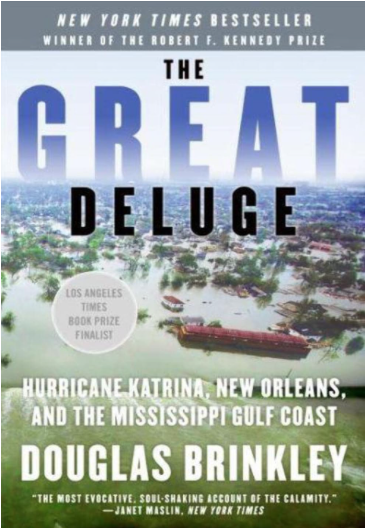
YLD Book Review -THE GREAT DELUGE: HURRICANE KATRINA, NEW ORLEANS, AND THE MISSISSIPPI GULF COAST (2007) by Douglas Brinkley
THE GREAT DELUGE: HURRICANE KATRINA, NEW ORLEANS, AND THE
MISSISSIPPI GULF COAST by Douglas Brinkley
Reviewed by CDR Joseph J. Leonard, Jr., CDR, USCG (ret.)
In The Great Deluge, Douglas Brinkley delivers a searing and comprehensive account
of Hurricane Katrina, chronicling the storm's devastating physical impact, the resulting
humanitarian catastrophe, and the systemic failures of leadership that compounded the
crisis. As both a New Orleans resident and historian, Brinkley combines meticulous
research with an empathetic narrative, vividly portraying the harrowing experiences of
those who lived through the disaster. The book begins by detailing the ferocity of
Hurricane Katrina, which slammed into the Gulf Coast on August 29, 2005, with 150-
mile-per-hour winds that obliterated cities and infrastructure. Brinkley recounts how the
storm surge flooded 80% of New Orleans, leaving a half-million homes underwater and
displacing hundreds of thousands of residents. This unprecedented natural disaster,
however, was only the first act in a triple tragedy that revealed profound flaws in
governmental preparedness and response.
Brinkley’s investigation of the storm's aftermath exposes staggering failures at every
level of government. He critiques New Orleans Mayor Ray Nagin for his inequitable
evacuation plan that prioritized the affluent, Louisiana Governor Kathleen Blanco for her
indecision during a critical moment of fear and confusion, and FEMA Director Michael
Brown for his apparent detachment from the unfolding chaos. These leadership
shortcomings, Brinkley argues, turned a natural disaster into a human tragedy, leaving
vulnerable communities to bear the brunt of neglect and mismanagement. Amid the
systemic failures, Brinkley highlights stories of heroism that shine a light on the
resilience and humanity of individuals in the face of overwhelming adversity. Coast
Guard Commander Jimmy Duckworth’s tireless rescue efforts and journalist Tony
Zumbado’s unflinching coverage of the crisis emerge as examples of selfless
leadership. Brinkley masterfully weaves survivor testimonials into the narrative, giving
voice to those who endured the unthinkable and emphasizing the importance of their
stories in understanding the full scope of the disaster.
What sets The Great Deluge apart is its blend of rigorous research and deeply human
storytelling. Brinkley uses interviews, official records, and firsthand accounts to dissect
the Katrina crisis, offering insights into the cascading failures that exacerbated the
storm's impact. His critique of leadership is unflinching yet balanced, recognizing not
only the failures but also the potential for meaningful change. Brinkley’s work serves as
both a historical record and a cautionary tale, reminding readers of the critical need for
competent, compassionate leadership in times of crisis. He underscores the importance
of preparation, equitable decision-making, and the ability to act decisively under
pressure.
YLD Key Leadership Takeaway: Effective leadership during a crisis demands
preparedness, clear communication, and an unwavering commitment to equity and humanity.
The failure to prioritize these principles can turn a disaster into an enduring
tragedy.
ISBN: 13: 9780061148491

YLD Book Review – THE LONG SEPTEMBER: THE SOCIAL LIFE OF A KATRINA RESPONDER (2015) by LCDR Cheri Ben-Iesau, USCG (ret.)
THE LONG SEPTEMBER: THE SOCIAL LIFE OF A KATRINA RESPONDER
by LCDR Cheri Ben-Iesau, USCG (ret.)
Reviewed by CDR Joseph J. Leonard, Jr., CDR, USCG (ret.)
Lieutenant Commander Cheri Ben-Iesau’s The Long September: The Social Life of a Katrina Responder offers a deeply personal and evocative account of the chaos, humanity, and resilience witnessed during the aftermath of Hurricane Katrina. Drawing from her own experiences as an emergency responder, LCDR Ben-Iesau provides a ground-level perspective of the disaster, focusing not only on the monumental challenges of disaster relief but also on the emotional and social dynamics of those who stepped up to help. The book stands out for its unique lens on the Katrina disaster: rather than recounting the macro-level failures and successes of governments or organizations, LCDR Ben-Iesau zeroes in on the responders themselves—their struggles, relationships, and moments of triumph and despair. She paints a vivid picture of what it means to work in the trenches of disaster recovery, where logistical nightmares, emotional exhaustion, and moral dilemmas collide with camaraderie, resourcefulness, and the undeniable drive to make a difference.
LCDR Ben-Iesau’s writing is raw and unfiltered, capturing both the physical devastation of the Gulf Coast and the psychological toll on those tasked with its recovery. She shares anecdotes of long, grueling days spent providing aid, the challenge of navigating bureaucratic inefficiencies, and the resilience of communities desperate for help. Yet, the book is not without moments of levity and connection, as Ben-Iesau delves into the relationships formed among responders, whose shared mission fostered a sense of purpose and solidarity amid the chaos. A central theme of the book is the complexity of human behavior in times of crisis. Ben-Iesau doesn’t shy away from addressing the imperfections of responders, including her own. She highlights the emotional highs and lows, the tensions that arise in high-pressure environments, and the moral compromises sometimes made in the pursuit of the greater good. These reflections lend the narrative a deeply human quality, reminding readers that responders are not superheroes—they are individuals driven by compassion but subject to the same vulnerabilities as those they serve.
In addition to its emotional depth, The Long September provides valuable insights into the intricacies of disaster response. LCDR Ben-Iesau critiques the inefficiencies and inequities she observed, offering lessons for improving preparedness and response systems. She underscores the importance of flexibility, communication, and the ability to adapt to rapidly changing circumstances, qualities that are as critical to successful disaster relief as technical expertise. Ultimately, LCDR Ben-Iesau’s book is a testament to the resilience of both survivors and responders, offering a nuanced perspective on the enduring impact of Hurricane Katrina. It is an essential read for anyone seeking to understand the human dimensions of disaster response and the leadership it demands.
YLD Key Leadership Takeaway: Leadership in crisis requires empathy, adaptability, and the ability to foster collaboration under pressure. By recognizing the humanity in those they lead and serve, effective leaders can inspire resilience and drive meaningful action, even in the most challenging circumstances.
ISBN: 13: 9781514804278
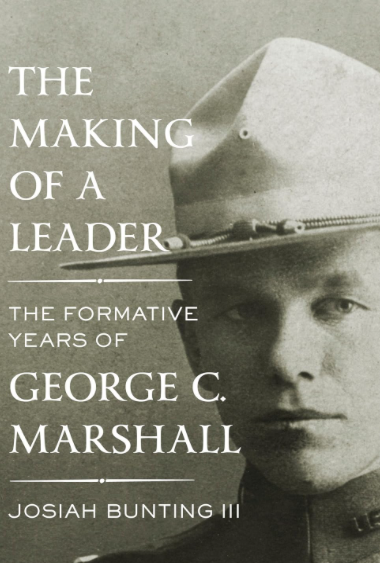
YLD Book Review THE MAKING OF A LEADER (2024) by Josiah Bunting III
THE MAKING OF A LEADER (2024) by Josiah Bunting III
Reviewed by CDR Joseph J. Leonard, Jr., CDR, USCG (ret.)
Josiah Bunting III’s The Making of a Leader offers a profound exploration of the formative years of George C. Marshall, one of the most respected leaders of the 20th century. By focusing on the moments that shaped Marshall’s character and leadership, rather than his well-documented accomplishments during World War II and the postwar period, Bunting crafts an intimate portrait of a man whose greatness was rooted in humility, discipline, and a lifelong commitment to learning. The book opens with Marshall’s early days as a cadet at the Virginia Military Institute, where he began to develop the values of perseverance and integrity that would define his career. Bunting provides vivid descriptions of Marshall’s experiences, illustrating how the rigors of military education forged a sense of responsibility and selflessness that would guide him throughout his life.
A key turning point in Marshall’s development came during his time at Fort Leavenworth, where he honed his intellectual curiosity and learned the critical skill of “how to learn.” This period, Bunting argues, was foundational to Marshall’s ability to adapt to new challenges and think strategically, qualities that later became hallmarks of his leadership. The book also delves into Marshall’s tenure as aide-de-camp to General John J. Pershing and his experiences during World War I, which provided him with invaluable insights into the complexities of leadership in times of crisis. Through these experiences, Marshall not only refined his own leadership style but also gained an acute understanding of how to inspire and empower others. Bunting pays particular attention to Marshall’s interwar years, a phase often overlooked in traditional biographies. As a leader at Fort Benning, Marshall revolutionized military education, instilling a culture of innovation and adaptability that prepared the U.S. Army for the challenges of World War II. Bunting’s detailed analysis of this period highlights Marshall’s vision and foresight, demonstrating his ability to recognize and nurture talent in others—a trait that became a cornerstone of his leadership philosophy.
What sets The Making of a Leader apart is Bunting’s ability to humanize Marshall. He goes beyond the myth to reveal the man: his frustrations, doubts, mistakes, and moments of vulnerability. Yet, it is precisely these traits that make Marshall’s leadership all the more inspiring. His brilliance was not a product of innate genius but of relentless effort, moral clarity, and an unwavering belief in the value of service. Bunting’s meticulous research and eloquent prose make this book an engaging and enlightening read, not only for those interested in military history but for anyone seeking to understand what makes a great leader.
YLD Key Leadership Takeaway: True leadership is rooted in humility, a commitment to lifelong learning, and the ability to inspire greatness in others. George Marshall exemplified these qualities, proving that the making of a leader is as much about character as it is about accomplishments.
ISBN: 13: 9781400042586
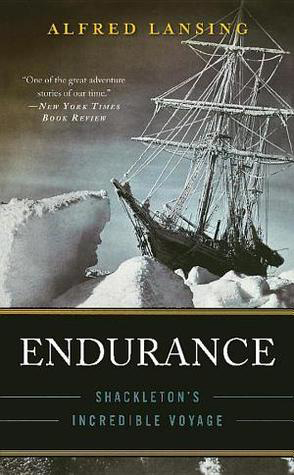
Endurance
by Alfred Lansing (1959)
In 1914, explorer Edward Shackleton undertook an expedition to the South Pole. No satellite radio, no GPS, no freeze dried food, no rescue aircraft. Just “guts” and a team of very brave men who trusted and believed in their leader. Although the mission was a
failure, the resulting story of survival in the ice-bound Antarctic seas serves as a guide-post for leaders confronted with adversity.
The book recounts the failure of the Imperial Trans-Antarctic Expedition led by Sir Ernest Shackleton in its attempt to cross the Antarctic continent in 1914 and the subsequent struggle for survival endured by the twenty-eight man crew for almost two years.
YLD Leadership Takeaway: Be Real – No one can fake leadership. And, if they can, it won’t last long. Acknowledging fear and vulnerability are far more valuable leadership skills than being cold or shut-off.
[ISBN13: 9780786706211]
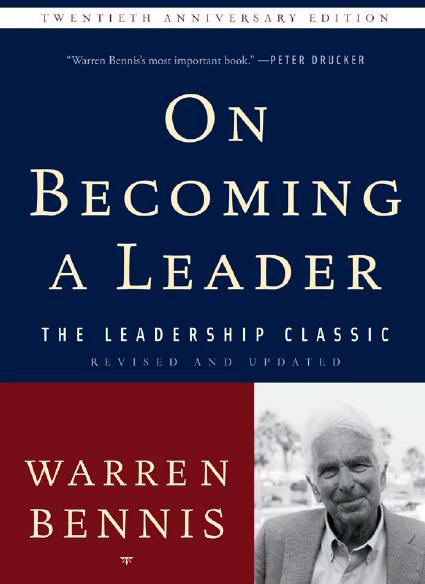
On Becoming a Leader
By Warren Bennis (1989)
This book provides many fine insights. Perhaps the key one is that true leaders are not interested in proving themselves; they want above all to be able to express themselves fully. A leader is continually seeking his or her fullest expression, and must be willing to engage in periodic reinvention. Structured education and society often get in the way of leadership. Real learning is the process of remembering what is important to us, and becoming a leader is therefore the act of becoming more and more yourself.
Bennis makes the case that becoming a leader involves: Continuous learning and never-dying curiosity; A compelling vision; leaders first define their reality (what they believe is possible), then set about ‘managing their dream’; Developing the ability to communicate that vision and inspire others to follow it; Tolerating uncertainty and taking on risk – a degree of daring; personal integrity: self-knowledge, candor, maturity, welcoming criticism; taking time off to think and reflect, which brings answers and produces resolutions.
YLD’s Key leadership Takeaways: Personal integrity, a compelling vision and the ability to enjoy risk and uncertainty define leadership – To lead, we have to make a declaration of independence against the estimation of others, the culture, the age. Leaders do not just ‘do well’ by the terms of their culture; they create new contexts, new things, new ways of doing and being.
[ISBN-13: 978-0465014088]
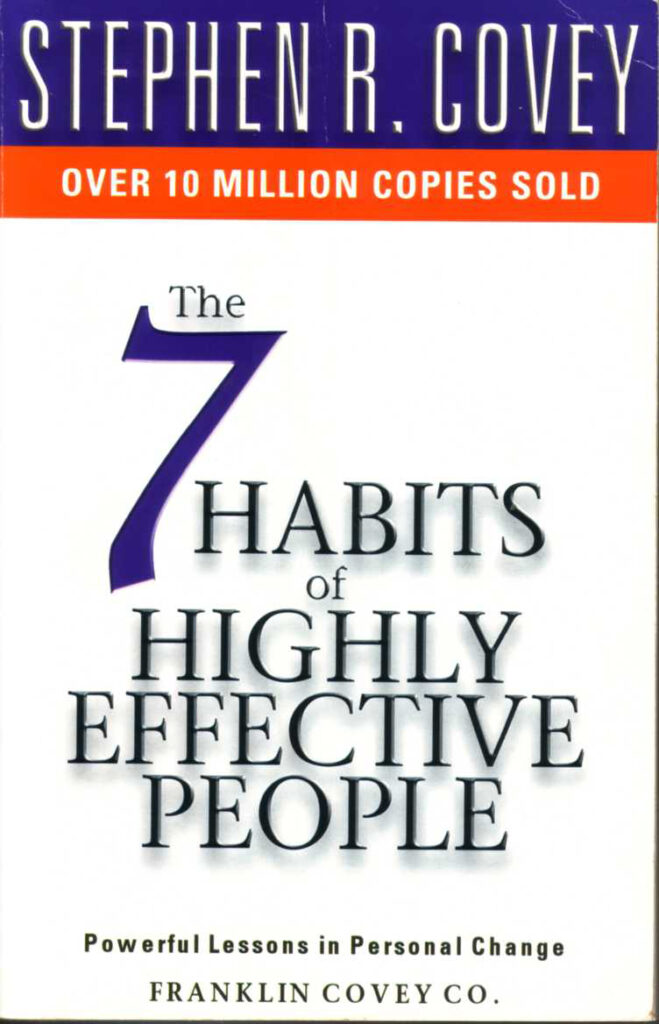
The Seven Habits of Highly Effective People
by Steven Covey (2004)
Stephen R. Covey presents a holistic, integrated, principle-centered approach for solving personal and professional problems. With penetrating insights and pointed anecdotes, Covey reveals a step-by-step pathway for living with fairness, integrity, honesty and human dignity―principles that give us the security to adapt to change, and the wisdom and power to take advantage of the opportunities that change creates. This book sold over 15 million copies!
YLD’s Key Leadership Takeaway: Change your mindset in order to embrace an alternative perspective.
[ISBN-13: 860-1405710017]
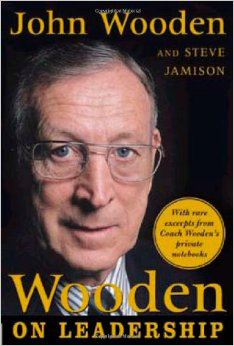
John Wooden on Leadership
by John Wooden (2005)
This book provides a compelling look inside the mind and powerful leadership methods of America’s coaching legend, John Wooden. Coach Wooden’s goal in 41 years of coaching never changed; namely, he tried to get the maximum effort and peak performance from each of his players in the manner that best served the team. Wooden on Leadership explains step-by-step how he pursued and accomplished this goal.
YLD Leadership Takeaway: Be at your best when your best is needed – team spirit, loyalty, enthusiasm, determination. Acquire and keep these traits and success should follow.
[ISBN-10: 0071453393]
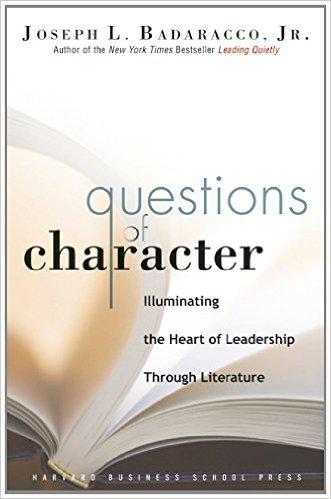
Questions of Character: Illuminating the Heart of Leadership Through Literature
by Joseph Badaracco (2006)
Badaracco is the John Shad Professor of Business Ethics at Harvard Business School. The author draws on his experience teaching MBA students and uses eight selections from serious fiction to encourage leaders to explore in depth what it really means to “know thyself.”
The stories in the book include Arthur Miller’s Death of a Salesman, Nigerian writer Chinua Achebe’s Things Fall Apart, Robert Bolt’s A Man for All Seasons, and Sophocles’s Antigone. Each of the eight discussions is preceded by a key question and then by Professor Badaracco’s thumbnail outline of the story and its protagonist. The eight key questions, such as “Do I have a good dream?” and “How flexible is my moral code?” are backed up by subsidiary questions, as the author, in Socratic fashion, rejects easy, superficial responses. He is critical, for example, of the metaphor of the moral compass, arguing that it is useful only for dealing with questions of right and wrong.
YLD Key Leadership Takeaway: Decide something! – Making difficult leadership decisions seldom turns out to be an easy Yes or No pathway. Many, if not most, leadership challenges demand a choice between two “rights” or, worse still, between two “wrongs.” Understanding the tool of critical thinking and self-reflection can help you make the difficult decisions for the better good of the team.
[ISBN-13: 978-1591399681]
